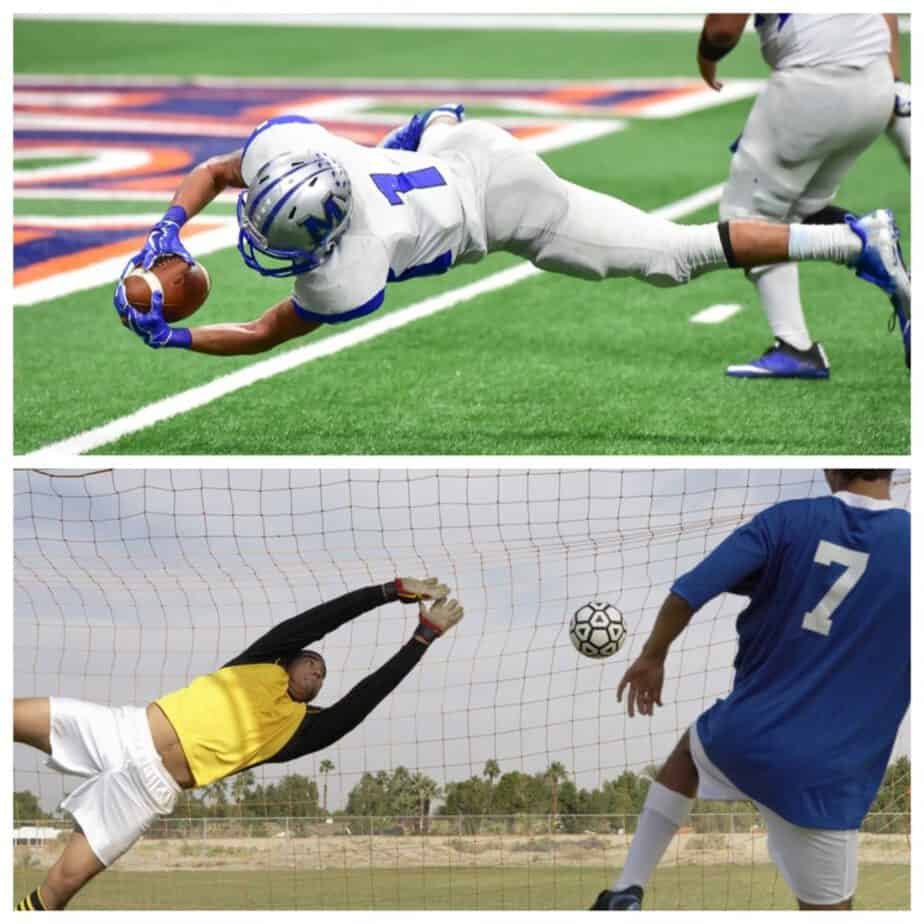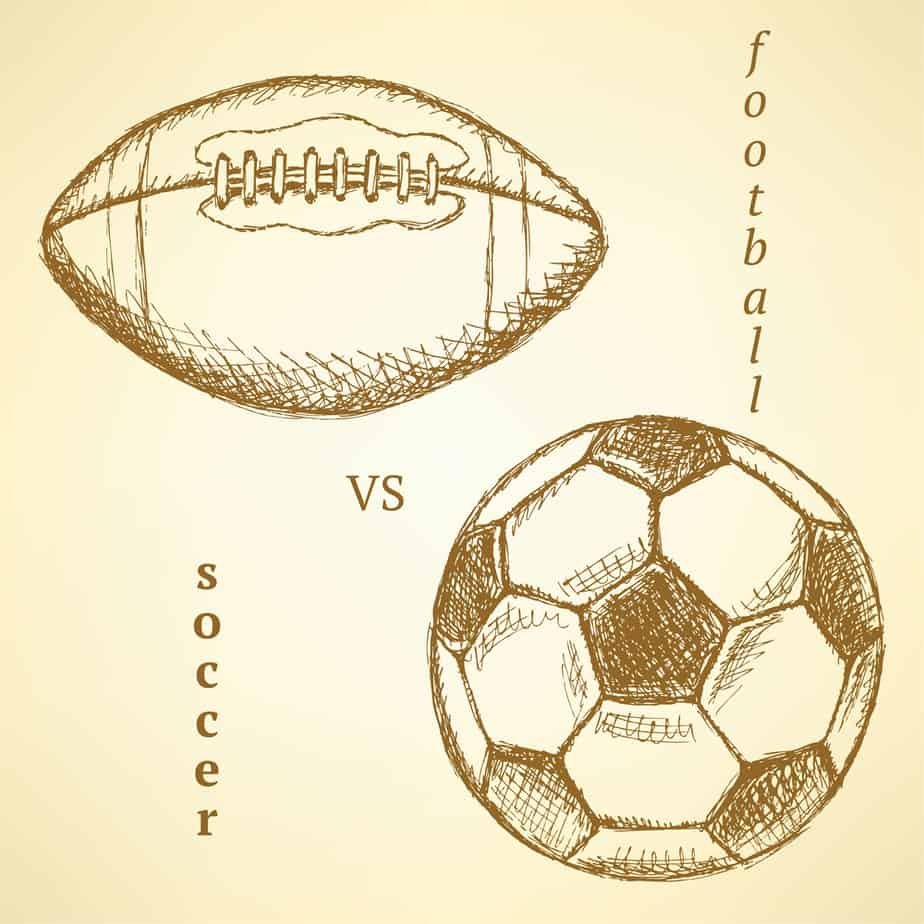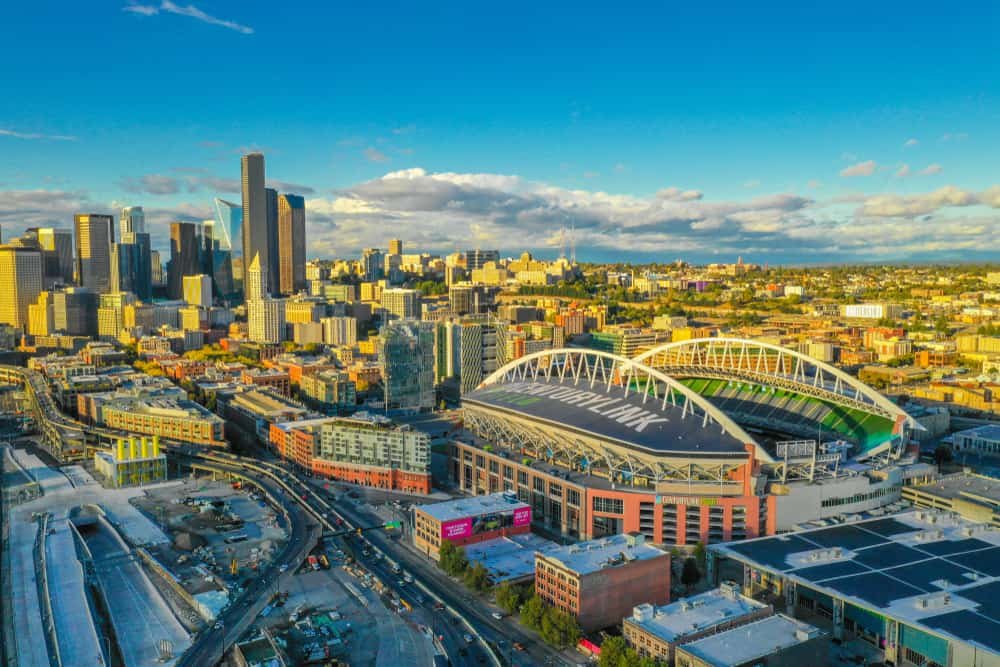
There are two popular kinds of football in the world, American football, and football, also known as “soccer” in the United States.
Fans of both sports often fight about which one is better. Most Americans love American football, as it is the most popular sport in the United States. On the flip side, soccer is more popular in the rest of the world.
In this article, we will examine the differences and similarities between both sports.
Note: To prevent confusion, we will use the term ‘football‘ for the American sport, while “soccer” for the type of football known as the world’s most popular sport.
Differences Between Football and Soccer.
1. Scoring System: Touchdowns vs. Goals
The main objective is the same in both American football and soccer ‒ you need to outscore your opponent if you want to win the game.
However, in football, players obtain points by scoring touchdowns, which involves carrying the ball beyond the opponent’s goal line. A touchdown is worth six points, and the scoring team gets to kick a field goal, which is worth one point.
In soccer, the players obtain points by scoring goals, which involves kicking the ball into the opponent’s goal. The side which scores more goals wins the game. If the teams have the same number of points at the end of the game, it ends in a tie.

2. Time limit
The time limit is another big difference between football and soccer. A game of football is played in four 15-minute quarters, with a half-time break after the second quarter. Soccer is played in two halves of 45 minutes, with a 15-minute break between them.
Another difference regarding the time is the fact that football has an option for a timeout, and the game clock also stops frequently between plays.
In soccer, the clock never stops ticking. However, there is something called injury time, which is added after the regular 90 minutes. The amount of injury time is usually the estimated time lost due to injuries or other reasons for stoppage of play.
3. Overtime
Americans don’t like ties. If you look at their most popular sports, you will notice that they almost never result in ties. A game may end regulation time without a winner, but then the game goes to overtime.
During the regular season in the NFL, a 10 minute overtime is played. If the game is still tied after the overtime period, it officially ends in a draw. In the playoffs, of course, a winner must be decided.
A tie is always possible in domestic soccer championships, meaning both sides have won one point each from the game. However, in the knockout stage of a competition, there must be a winner. So if the match is tied after the end of regulation, there are two extra overtime periods of 15 minutes each. If no one wins during those periods, the winner is decided by a penalty shootout.

4. The game rules
Football and soccer are two different sports, so it is normal for them to have different rules. One of the most notable rule differences is the use of the hands.
Despite being called football, the players mostly use their hands during the course of play. In soccer, only the goalkeeper is allowed to touch the ball with his hands ‒ and only in a restricted area called the “penalty box.”
Physical tackling is also allowed in football, while it is strictly prohibited in soccer. Soccer players actually get sent off for aggressively tackling other players, while that kind of contact is encouraged in football.
5. Substitutes
Substitutes are common in team sports. They allow coaches to rest injured players or those who are not performing well.
However, the substitute rule is different in football and soccer.
In football, the coach is allowed to make as many substitutes as he wants. He usually has two different teams for attacking and defending and is constantly switching the players depending on the situation on the field.
In soccer, coaches can make only three substitutes during a game. Additionally, once a player is taken off, he is not permitted to return.
6. The equipment

Another apparent difference between football and soccer is the players’ equipment.
Players in each sport always wear a jersey with the team’s logo and their names on the back, these are the only equipment-related similarities.
In American football, the players are required to wear lots of protective gear, including helmets, shoulder pads, girdle pads, and gloves. In soccer, players only wear shin pads and boots.
Having listed some of the differences between football and soccer, let’s now have a look into the things that make these two sports similar to one another.
Similarities Between Football and Soccer.
1. Both sports are played with a ball
The ball is the fundamental object used in both American football and soccer. Without a ball, one would not be able to play either sport.
The football and the soccer ball have some key differences between them.
In soccer, the ball has a spherical shape. It is perfectly round and weighs between 410 grams and 450 grams. It has a circumference of 68 cm to 70 cm, depending on the ball in question.
The American football is a prolate spheroid about 28 cm long and about 56 cm in circumference at the center. It also weighs around 400 grams.

2. Playing surface
The surface is the most obvious similarity between football and soccer, as both sports are played on a grass surface.
A football field is 120 yards long in total ‒ 100 yards of playing field and two 10-yard end zones. Its standard width is 160 feet or around 50 meters.
A soccer field’s length ranges between 100 and 130 yards, while it ranges from 60 to 70 meters wide.
3. Number of players
Both Football and soccer allow 11 players per team at any point in time on the field.
The players’ formation and their movements are quite different, though.
In football, the whole team attacks and defends in one line, while soccer is played through three different zones ‒ defense, midfield, and attack.
Soccer players tend to stay in their zone for most of the game unless the coach gives them different instructions.
4. Tactics
Tactics are a vital component in both soccer and American football.
Every single time an underdog has defeated a favorite in either soccer or football, it’s been thanks to great tactics and solid application of those tactics to the game.

Both soccer teams and football teams have a variety of useful tactics, as well as coaches who come up with them. And in both sports, the coaches have a full staff behind them ‒ people that analyze the strengths, flaws, and vulnerabilities of both teams.
These tactics can involve different kinds of actions, attacking combinations or ways to defend the opposition’s most dangerous players. Coaches can also change tactics during the games, depending on the result and the game flow.
5. Playmakers
Both football and soccer clubs have playmakers on their squads. These players change the game when they’re on the field, making them the most important players on the team.
In American football, the playmaker is also called quarterback, and he is almost always the most important player on the team. The quarterback takes the biggest responsibility during games, as he is the strategist who executes his team’s attacks.
Like football, the playmaker in soccer is also the player who controls the flow of the game. He is naturally gifted with the ball, and his primary task is to create scoring opportunities. He usually plays in the midfield position and has great dribbling technique and a wide passing range.
6. Both sports are played at stadiums
Unlike some other popular sports ‒ such as basketball, handball, and hockey ‒ both football and soccer are played at stadiums under the open sky.
It doesn’t matter if it rains or snows ‒ in both soccer and football, the players need to be ready to play under many different weather conditions.

The stadiums that soccer and football are played in are also bigger than other sports arenas, which means more people can attend these games.
